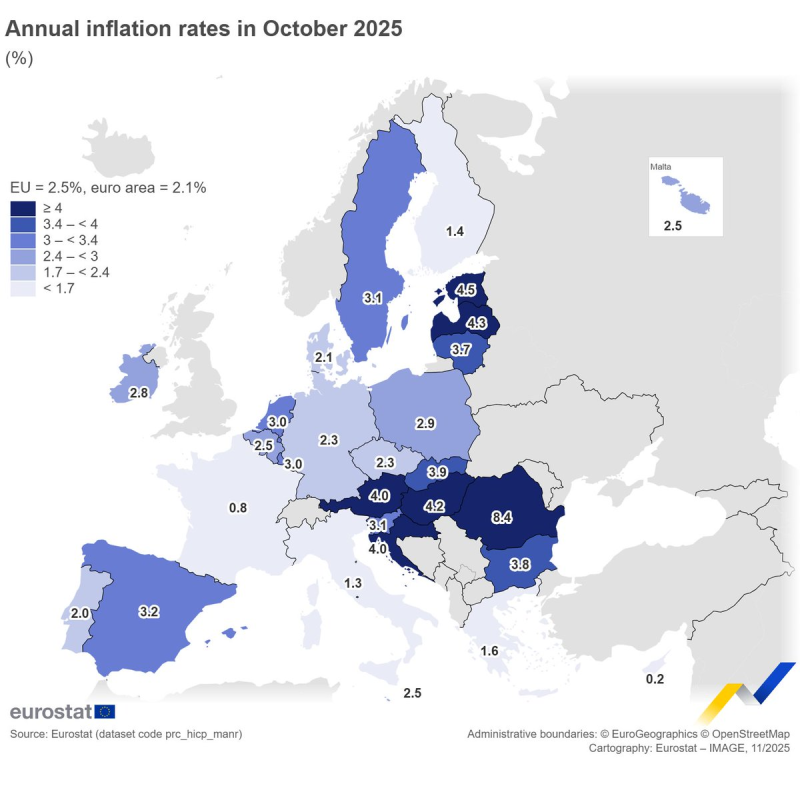⬤ Inflation across Europe kept sliding in October 2025, hitting one of the lowest points we've seen in almost two years. The numbers show annual inflation dropped to 2.1% in the eurozone and 2.5% across the wider EU. What's interesting is how different things look from country to country—some places saw prices barely budge while others are still dealing with serious inflation headaches.

⬤ Cyprus came in with the lowest annual inflation at just 0.2%, with France right behind at 0.8%. Western European economies like Spain at 2.0% and Belgium at 1.7% also stayed in the comfortable zone. But flip over to Central and Eastern Europe, and it's a totally different story. Romania is sitting at the top with 8.4% inflation, while Estonia and Latvia are hanging around 4.5% and 4.3%. These gaps show just how much economic situations, government policies, and sector pressures vary across the region.
The overall EU trend indicates that inflation is moving closer to the European Central Bank's medium-term objective.
⬤ The data also reveals that inflation between 3% and 4% is still sticking around in several spots, including Hungary at 4.2%, Slovakia at 3.9%, and Croatia at 3.1%. Germany's at 2.3% and Italy's at 1.3%, which backs up the bigger picture of prices cooling off in major eurozone economies. The trend across the EU shows inflation is getting closer to what the European Central Bank wants to see.
⬤ This cooling inflation matters a lot for economic planning, what people expect from monetary policy, and overall confidence. With price growth easing but still pretty uneven across regions, the numbers give us a clearer picture of what's coming in 2026 and the challenges that are still on the table for getting stable, balanced inflation across the entire bloc.
 Peter Smith
Peter Smith

 Peter Smith
Peter Smith


